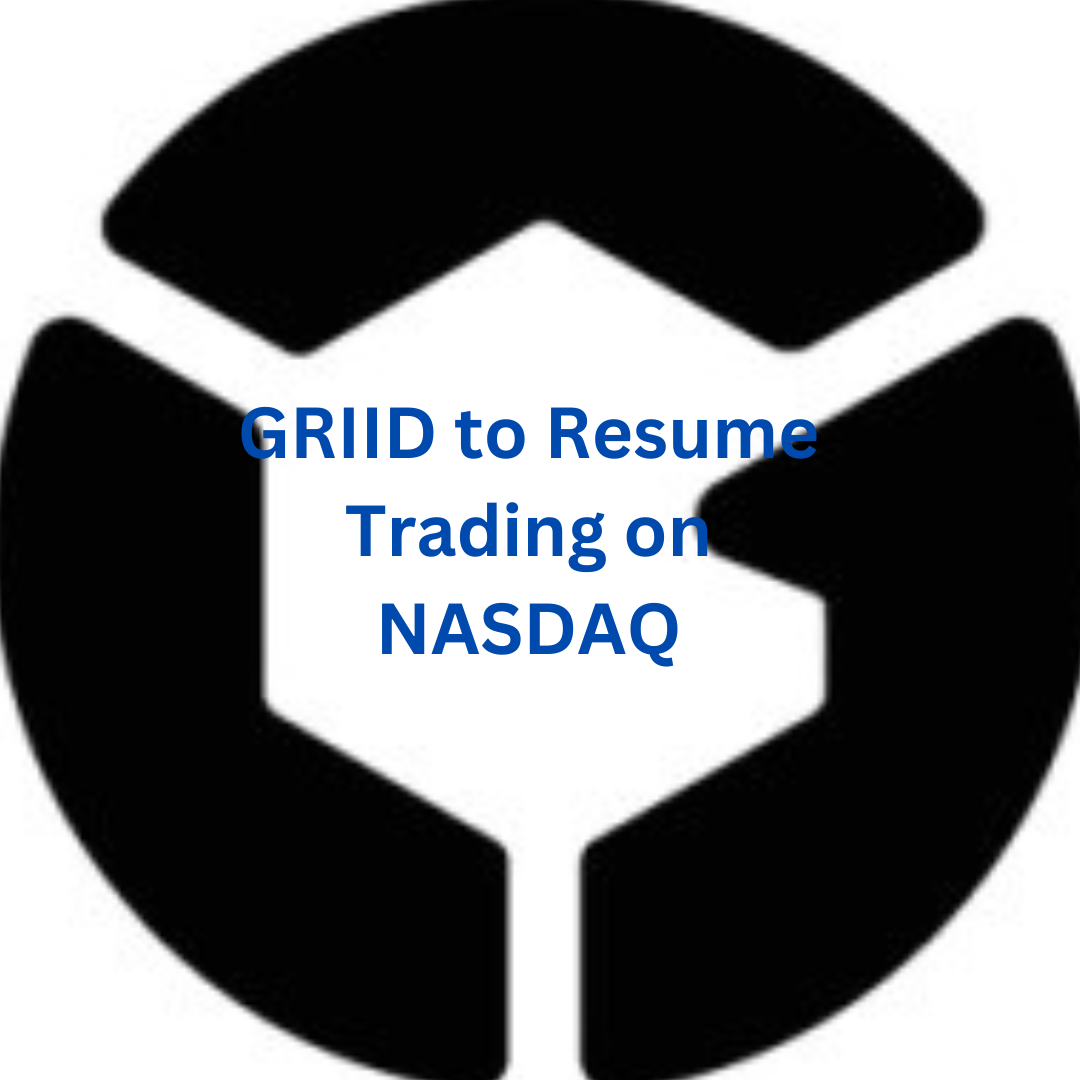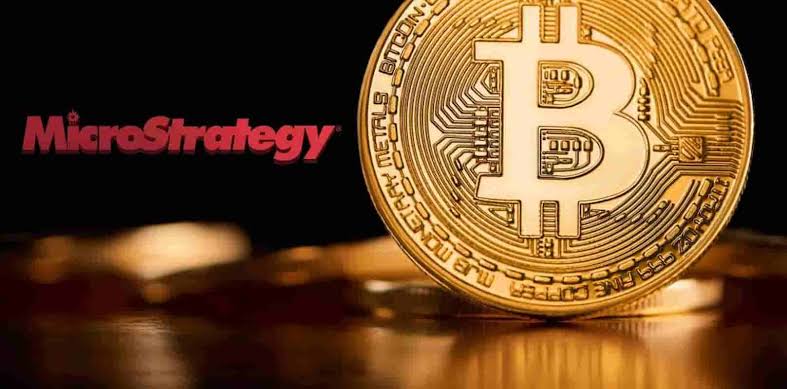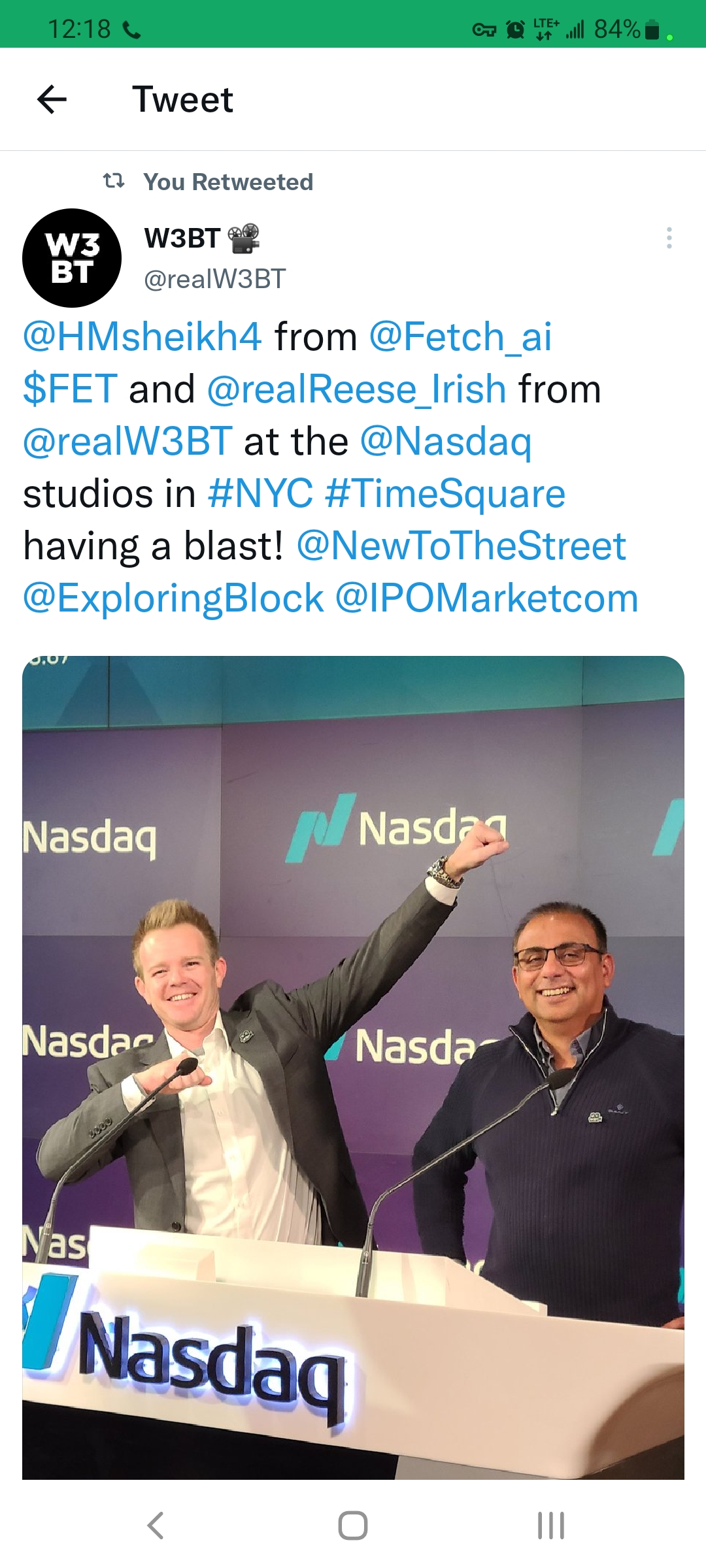‘Too big to fail’ was bad enough for the banks. Now we have ‘too many to fail.’
Last Updated: Feb. 13, 2024 at 1:20 p.m. ET
People line up outside of the shuttered Silicon Valley Bank headquarters on March 10, 2023, in Santa Clara, Calif.
Getty Images
Almost a year after the mini banking crisis in the United States, it is worth revisiting the episode. Was it just a tempest in a teacup? Was there really a systemic threat, or was it just a problem with a few banks? Should the interventions by the U.S. Federal Reserve and Treasury worry or comfort us?
Recall that three mid-size U.S. banks suddenly failed around March 2023. The most prominent was Silicon Valley Bank, which became the second-largest bank failure in U.S. history, after Washington Mutual in 2008. Roughly 90% of the deposits at SVB were uninsured, and uninsured deposits are prone to runs. Making matters worse, SVB had invested significant sums in long-term bonds, the market value of which fell as interest rates rose. When SVB sold some of these holdings to raise funds, the unrealized losses embedded in its bond portfolio started coming to light. A failed equity offering then triggered a classic bank run.
It is convenient to think that these issues were confined to just a few rogue banks. But the problem was systemic.
When the Fed engages in quantitative easing (QE), it buys bonds from financial institutions. Typically, those sellers then deposit the money in their bank, and this results in a large increase in uninsured deposits in the banking system. On the banks’ asset side, there is a corresponding increase in central-bank reserves. This is stable, since reserves are the most liquid asset on the planet and can be used to satisfy any impatient depositors who come for their money. Unfortunately, a number of smaller banks (with less than $50 billion in assets) moved away from this stable position as QE continued.
Historically, smaller U.S. banks financed themselves conservatively, with uninsured demandable deposits accounting for only around 10% of their liabilities. Yet by the time the Fed was done with its pandemic-era QE, these banks’ uninsured demandable deposits exceeded 30% of liabilities. Though that level was still far below SVB’s, these institutions clearly had drunk from the same firehose.
Smaller banks were also more conservative about liquidity in the past. At the outset of QE in late 2008, banks with less than $50 billion in assets had reserves (and other assets that could be used to borrow reserves) that exceeded the uninsured demandable deposits they had issued. By early 2023, however, they had issued runnable claims (in aggregate) that were one and a half times the size of their liquid assets. Instead of holding liquid reserves, their assets were now more weighted toward long-term securities and term lending, including a significant share of commercial real-estate (CRE) loans.
Advertisement
Thus, as the Fed raised interest rates, the economic value of these banks’ assets fell sharply. Some of the fall was hidden by accounting sleight of hand, but SVB’s sudden demise caused investors to scrutinize banks’ balance sheets more carefully. What they saw did not instill confidence. The KBW Nasdaq Bank Index duly fell by over 25%, and deposits started flowing out of a large number of banks, many of which lacked the liquidity to accommodate the sudden outflows. The risk of contagious runs across smaller banks was real, as was the possibly of the problem spreading more widely.
The Treasury essentially took bank runs off the table, while the Fed provided banks the funds to accommodate the continuing — though no longer panicked — depositor outflows.
Importantly, as private money flowed to large banks, very little flowed to small- and medium-size institutions. That is why the authorities had to come to the rescue. Soon after SVB’s demise, the Treasury signaled that no uninsured depositor in small banks would suffer losses in any further bank collapses.
The Fed opened a generous new facility that lent money for up to one year to banks against the par, or face value, of the securities they held on their balance sheets, without adjusting for the erosion in the value of these securities from higher interest rates. And the Federal Home Loan Banks (FHLBanks) — effectively an arm of the U.S. government — increased its lending to stressed banks, with total advances to the banking system having already tripled between March 2022 and March 2023 amid the Fed’s policy tightening. Borrowing by small- and medium-size banks from these official sources skyrocketed.
The Treasury essentially took bank runs off the table, while the Fed provided banks the funds to accommodate the continuing — though no longer panicked — depositor outflows. A potential banking crisis was converted into a slow-burning problem for banks as they recognized and absorbed the losses on their balance sheets.
Just recently, New York Community Bancorp NYCB, -5.17%, which bought parts of one of the banks that failed in 2023, reminded us that this process is still underway when it announced large losses. With the Russell microcap index of small companies significantly underperforming the S&P 100 index OEX of the largest companies since March 2023, it appears that smaller banks’ troubles have weighed on their traditional clients: small- and medium-size companies.
Where does that leave us? Although the situation could have been much worse if the Treasury and the Fed had not stepped in, the seeming ease with which the panic was arrested allowed public attention to move on. Apart from die-hard libertarians, no one seems to care much about the extent of the intervention that was needed to rescue the smaller banks, nor has there been any broad inquiry into the circumstances that led to the vulnerabilities.
As a result, several questions remain unanswered. To what extent were the seeds of the 2023 banking stress sown by the pandemic-induced monetary stimulus and lax supervision of what banks did with the money? Did advances by the FHLBanks delay failed banks’ efforts to raise capital? Are banks that relied on official backstops after SVB’s failure keeping afloat distressed CRE borrowers, and therefore merely postponing an eventual reckoning?
It is not good for capitalism when those who knowingly take risks — bankers and uninsured depositors, in this case — pay no price when a risk materializes. Despite sweeping banking reforms over the past 15 years, the authorities have once again shown that they are willing to bail out market players if enough of them have taken the same risk.
“Too big to fail” was bad enough, but now we have “too many to fail.” The mini-crisis of March 2023 was much more than a footnote in banking history. We cannot afford to bury it.
Raghuram G. Rajan, a former governor of the Reserve Bank of India, is professor of finance at the University of Chicago Booth School of Business and the author, most recently, of Monetary Policy and Its Unintended Consequences (The MIT Press, 2023). Viral V. Acharya, a former deputy governor of the Reserve Bank of India, is professor of economics at New York University’s Stern School of Business.
This commentary was published with the permission of Project Syndicate — The Danger of Forgetting the 2023 Banking Crisis.
More: Regional-bank bondholders seem unworried by New York Community Bank’s problems
Also read: Recession in 2024? A quarter of economists think it will happen.
PAR-TY… . https://www.marketwatch.com/story/too-big-to-fail-was-bad-enough-for-the-banks-now-we-have-too-many-to-fail-d89dcdda
Last Updated: Feb. 13, 2024 at 1:20 p.m. ET
People line up outside of the shuttered Silicon Valley Bank headquarters on March 10, 2023, in Santa Clara, Calif.
Getty Images
Almost a year after the mini banking crisis in the United States, it is worth revisiting the episode. Was it just a tempest in a teacup? Was there really a systemic threat, or was it just a problem with a few banks? Should the interventions by the U.S. Federal Reserve and Treasury worry or comfort us?
Recall that three mid-size U.S. banks suddenly failed around March 2023. The most prominent was Silicon Valley Bank, which became the second-largest bank failure in U.S. history, after Washington Mutual in 2008. Roughly 90% of the deposits at SVB were uninsured, and uninsured deposits are prone to runs. Making matters worse, SVB had invested significant sums in long-term bonds, the market value of which fell as interest rates rose. When SVB sold some of these holdings to raise funds, the unrealized losses embedded in its bond portfolio started coming to light. A failed equity offering then triggered a classic bank run.
It is convenient to think that these issues were confined to just a few rogue banks. But the problem was systemic.
When the Fed engages in quantitative easing (QE), it buys bonds from financial institutions. Typically, those sellers then deposit the money in their bank, and this results in a large increase in uninsured deposits in the banking system. On the banks’ asset side, there is a corresponding increase in central-bank reserves. This is stable, since reserves are the most liquid asset on the planet and can be used to satisfy any impatient depositors who come for their money. Unfortunately, a number of smaller banks (with less than $50 billion in assets) moved away from this stable position as QE continued.
Historically, smaller U.S. banks financed themselves conservatively, with uninsured demandable deposits accounting for only around 10% of their liabilities. Yet by the time the Fed was done with its pandemic-era QE, these banks’ uninsured demandable deposits exceeded 30% of liabilities. Though that level was still far below SVB’s, these institutions clearly had drunk from the same firehose.
Smaller banks were also more conservative about liquidity in the past. At the outset of QE in late 2008, banks with less than $50 billion in assets had reserves (and other assets that could be used to borrow reserves) that exceeded the uninsured demandable deposits they had issued. By early 2023, however, they had issued runnable claims (in aggregate) that were one and a half times the size of their liquid assets. Instead of holding liquid reserves, their assets were now more weighted toward long-term securities and term lending, including a significant share of commercial real-estate (CRE) loans.
Advertisement
Thus, as the Fed raised interest rates, the economic value of these banks’ assets fell sharply. Some of the fall was hidden by accounting sleight of hand, but SVB’s sudden demise caused investors to scrutinize banks’ balance sheets more carefully. What they saw did not instill confidence. The KBW Nasdaq Bank Index duly fell by over 25%, and deposits started flowing out of a large number of banks, many of which lacked the liquidity to accommodate the sudden outflows. The risk of contagious runs across smaller banks was real, as was the possibly of the problem spreading more widely.
The Treasury essentially took bank runs off the table, while the Fed provided banks the funds to accommodate the continuing — though no longer panicked — depositor outflows.
Importantly, as private money flowed to large banks, very little flowed to small- and medium-size institutions. That is why the authorities had to come to the rescue. Soon after SVB’s demise, the Treasury signaled that no uninsured depositor in small banks would suffer losses in any further bank collapses.
The Fed opened a generous new facility that lent money for up to one year to banks against the par, or face value, of the securities they held on their balance sheets, without adjusting for the erosion in the value of these securities from higher interest rates. And the Federal Home Loan Banks (FHLBanks) — effectively an arm of the U.S. government — increased its lending to stressed banks, with total advances to the banking system having already tripled between March 2022 and March 2023 amid the Fed’s policy tightening. Borrowing by small- and medium-size banks from these official sources skyrocketed.
The Treasury essentially took bank runs off the table, while the Fed provided banks the funds to accommodate the continuing — though no longer panicked — depositor outflows. A potential banking crisis was converted into a slow-burning problem for banks as they recognized and absorbed the losses on their balance sheets.
Just recently, New York Community Bancorp NYCB, -5.17%, which bought parts of one of the banks that failed in 2023, reminded us that this process is still underway when it announced large losses. With the Russell microcap index of small companies significantly underperforming the S&P 100 index OEX of the largest companies since March 2023, it appears that smaller banks’ troubles have weighed on their traditional clients: small- and medium-size companies.
Where does that leave us? Although the situation could have been much worse if the Treasury and the Fed had not stepped in, the seeming ease with which the panic was arrested allowed public attention to move on. Apart from die-hard libertarians, no one seems to care much about the extent of the intervention that was needed to rescue the smaller banks, nor has there been any broad inquiry into the circumstances that led to the vulnerabilities.
As a result, several questions remain unanswered. To what extent were the seeds of the 2023 banking stress sown by the pandemic-induced monetary stimulus and lax supervision of what banks did with the money? Did advances by the FHLBanks delay failed banks’ efforts to raise capital? Are banks that relied on official backstops after SVB’s failure keeping afloat distressed CRE borrowers, and therefore merely postponing an eventual reckoning?
It is not good for capitalism when those who knowingly take risks — bankers and uninsured depositors, in this case — pay no price when a risk materializes. Despite sweeping banking reforms over the past 15 years, the authorities have once again shown that they are willing to bail out market players if enough of them have taken the same risk.
“Too big to fail” was bad enough, but now we have “too many to fail.” The mini-crisis of March 2023 was much more than a footnote in banking history. We cannot afford to bury it.
Raghuram G. Rajan, a former governor of the Reserve Bank of India, is professor of finance at the University of Chicago Booth School of Business and the author, most recently, of Monetary Policy and Its Unintended Consequences (The MIT Press, 2023). Viral V. Acharya, a former deputy governor of the Reserve Bank of India, is professor of economics at New York University’s Stern School of Business.
This commentary was published with the permission of Project Syndicate — The Danger of Forgetting the 2023 Banking Crisis.
More: Regional-bank bondholders seem unworried by New York Community Bank’s problems
Also read: Recession in 2024? A quarter of economists think it will happen.
PAR-TY… . https://www.marketwatch.com/story/too-big-to-fail-was-bad-enough-for-the-banks-now-we-have-too-many-to-fail-d89dcdda
‘Too big to fail’ was bad enough for the banks. Now we have ‘too many to fail.’
Last Updated: Feb. 13, 2024 at 1:20 p.m. ET
People line up outside of the shuttered Silicon Valley Bank headquarters on March 10, 2023, in Santa Clara, Calif.
Getty Images
Almost a year after the mini banking crisis in the United States, it is worth revisiting the episode. Was it just a tempest in a teacup? Was there really a systemic threat, or was it just a problem with a few banks? Should the interventions by the U.S. Federal Reserve and Treasury worry or comfort us?
Recall that three mid-size U.S. banks suddenly failed around March 2023. The most prominent was Silicon Valley Bank, which became the second-largest bank failure in U.S. history, after Washington Mutual in 2008. Roughly 90% of the deposits at SVB were uninsured, and uninsured deposits are prone to runs. Making matters worse, SVB had invested significant sums in long-term bonds, the market value of which fell as interest rates rose. When SVB sold some of these holdings to raise funds, the unrealized losses embedded in its bond portfolio started coming to light. A failed equity offering then triggered a classic bank run.
It is convenient to think that these issues were confined to just a few rogue banks. But the problem was systemic.
When the Fed engages in quantitative easing (QE), it buys bonds from financial institutions. Typically, those sellers then deposit the money in their bank, and this results in a large increase in uninsured deposits in the banking system. On the banks’ asset side, there is a corresponding increase in central-bank reserves. This is stable, since reserves are the most liquid asset on the planet and can be used to satisfy any impatient depositors who come for their money. Unfortunately, a number of smaller banks (with less than $50 billion in assets) moved away from this stable position as QE continued.
Historically, smaller U.S. banks financed themselves conservatively, with uninsured demandable deposits accounting for only around 10% of their liabilities. Yet by the time the Fed was done with its pandemic-era QE, these banks’ uninsured demandable deposits exceeded 30% of liabilities. Though that level was still far below SVB’s, these institutions clearly had drunk from the same firehose.
Smaller banks were also more conservative about liquidity in the past. At the outset of QE in late 2008, banks with less than $50 billion in assets had reserves (and other assets that could be used to borrow reserves) that exceeded the uninsured demandable deposits they had issued. By early 2023, however, they had issued runnable claims (in aggregate) that were one and a half times the size of their liquid assets. Instead of holding liquid reserves, their assets were now more weighted toward long-term securities and term lending, including a significant share of commercial real-estate (CRE) loans.
Advertisement
Thus, as the Fed raised interest rates, the economic value of these banks’ assets fell sharply. Some of the fall was hidden by accounting sleight of hand, but SVB’s sudden demise caused investors to scrutinize banks’ balance sheets more carefully. What they saw did not instill confidence. The KBW Nasdaq Bank Index duly fell by over 25%, and deposits started flowing out of a large number of banks, many of which lacked the liquidity to accommodate the sudden outflows. The risk of contagious runs across smaller banks was real, as was the possibly of the problem spreading more widely.
The Treasury essentially took bank runs off the table, while the Fed provided banks the funds to accommodate the continuing — though no longer panicked — depositor outflows.
Importantly, as private money flowed to large banks, very little flowed to small- and medium-size institutions. That is why the authorities had to come to the rescue. Soon after SVB’s demise, the Treasury signaled that no uninsured depositor in small banks would suffer losses in any further bank collapses.
The Fed opened a generous new facility that lent money for up to one year to banks against the par, or face value, of the securities they held on their balance sheets, without adjusting for the erosion in the value of these securities from higher interest rates. And the Federal Home Loan Banks (FHLBanks) — effectively an arm of the U.S. government — increased its lending to stressed banks, with total advances to the banking system having already tripled between March 2022 and March 2023 amid the Fed’s policy tightening. Borrowing by small- and medium-size banks from these official sources skyrocketed.
The Treasury essentially took bank runs off the table, while the Fed provided banks the funds to accommodate the continuing — though no longer panicked — depositor outflows. A potential banking crisis was converted into a slow-burning problem for banks as they recognized and absorbed the losses on their balance sheets.
Just recently, New York Community Bancorp NYCB, -5.17%, which bought parts of one of the banks that failed in 2023, reminded us that this process is still underway when it announced large losses. With the Russell microcap index of small companies significantly underperforming the S&P 100 index OEX of the largest companies since March 2023, it appears that smaller banks’ troubles have weighed on their traditional clients: small- and medium-size companies.
Where does that leave us? Although the situation could have been much worse if the Treasury and the Fed had not stepped in, the seeming ease with which the panic was arrested allowed public attention to move on. Apart from die-hard libertarians, no one seems to care much about the extent of the intervention that was needed to rescue the smaller banks, nor has there been any broad inquiry into the circumstances that led to the vulnerabilities.
As a result, several questions remain unanswered. To what extent were the seeds of the 2023 banking stress sown by the pandemic-induced monetary stimulus and lax supervision of what banks did with the money? Did advances by the FHLBanks delay failed banks’ efforts to raise capital? Are banks that relied on official backstops after SVB’s failure keeping afloat distressed CRE borrowers, and therefore merely postponing an eventual reckoning?
It is not good for capitalism when those who knowingly take risks — bankers and uninsured depositors, in this case — pay no price when a risk materializes. Despite sweeping banking reforms over the past 15 years, the authorities have once again shown that they are willing to bail out market players if enough of them have taken the same risk.
“Too big to fail” was bad enough, but now we have “too many to fail.” The mini-crisis of March 2023 was much more than a footnote in banking history. We cannot afford to bury it.
Raghuram G. Rajan, a former governor of the Reserve Bank of India, is professor of finance at the University of Chicago Booth School of Business and the author, most recently, of Monetary Policy and Its Unintended Consequences (The MIT Press, 2023). Viral V. Acharya, a former deputy governor of the Reserve Bank of India, is professor of economics at New York University’s Stern School of Business.
This commentary was published with the permission of Project Syndicate — The Danger of Forgetting the 2023 Banking Crisis.
More: Regional-bank bondholders seem unworried by New York Community Bank’s problems
Also read: Recession in 2024? A quarter of economists think it will happen.
😎🇺🇸🦅 PAR-TY… 🎉. https://www.marketwatch.com/story/too-big-to-fail-was-bad-enough-for-the-banks-now-we-have-too-many-to-fail-d89dcdda











